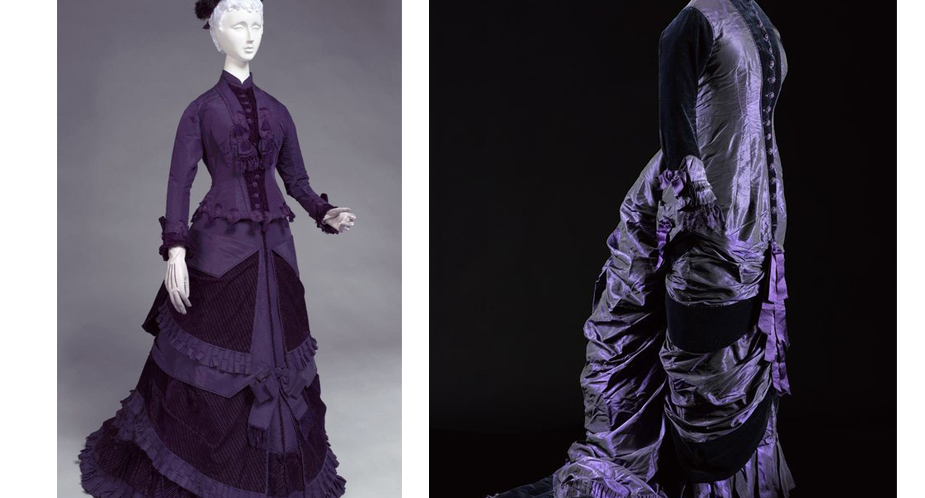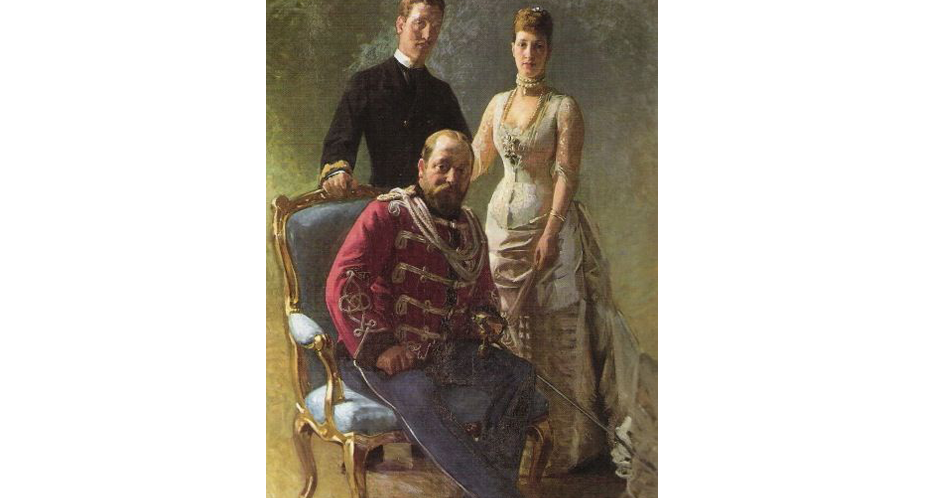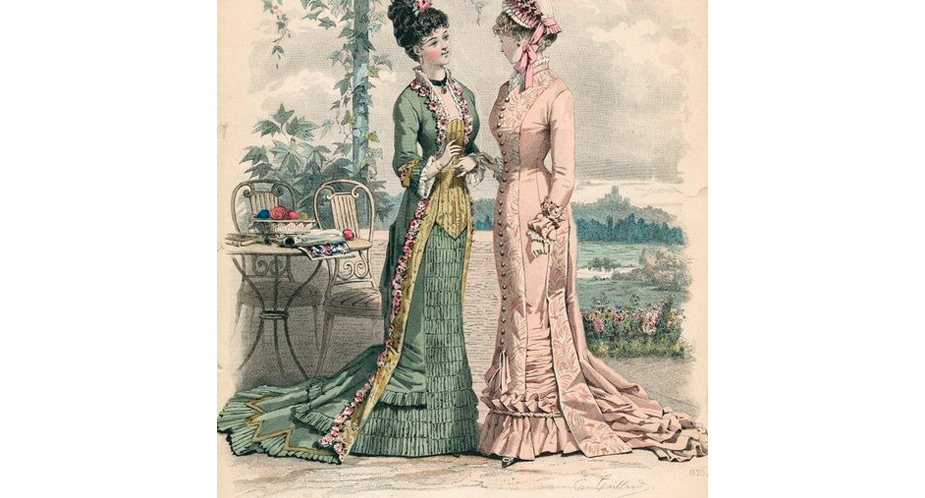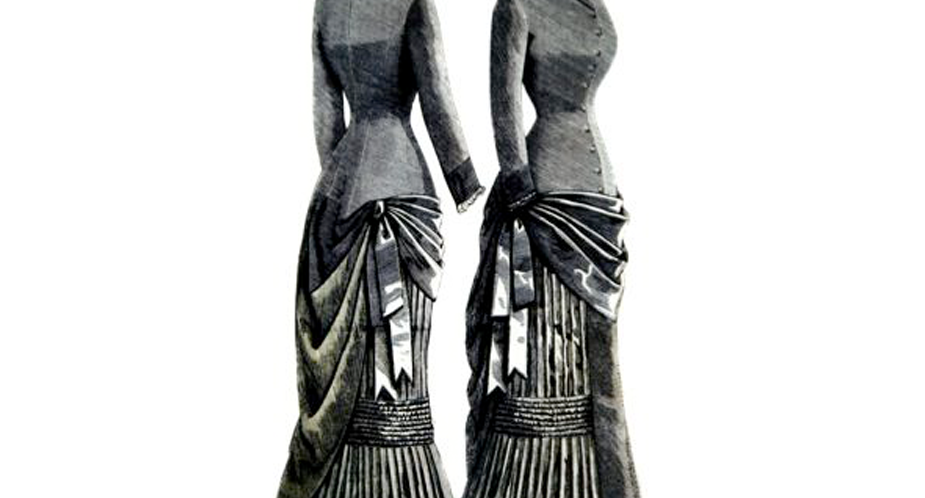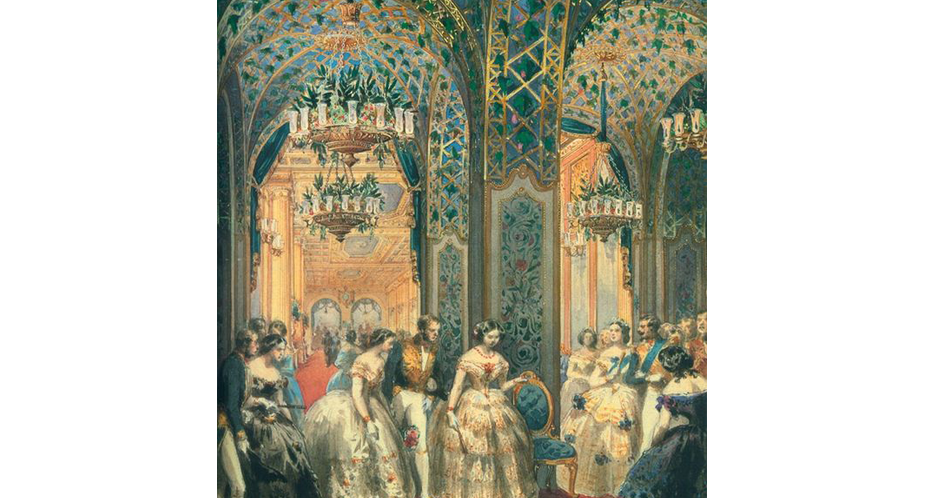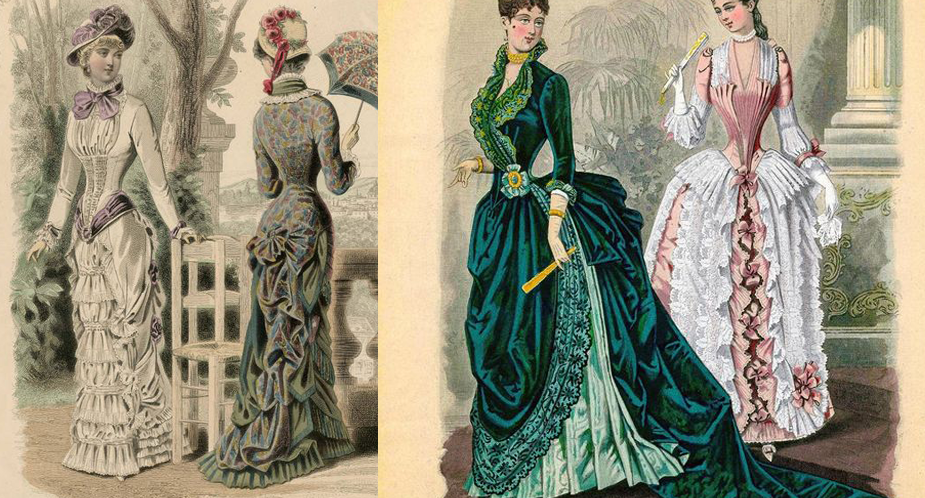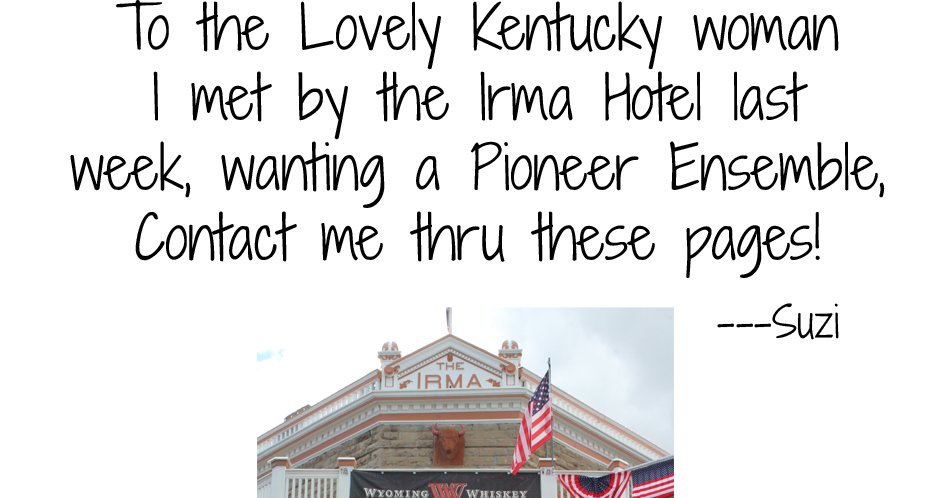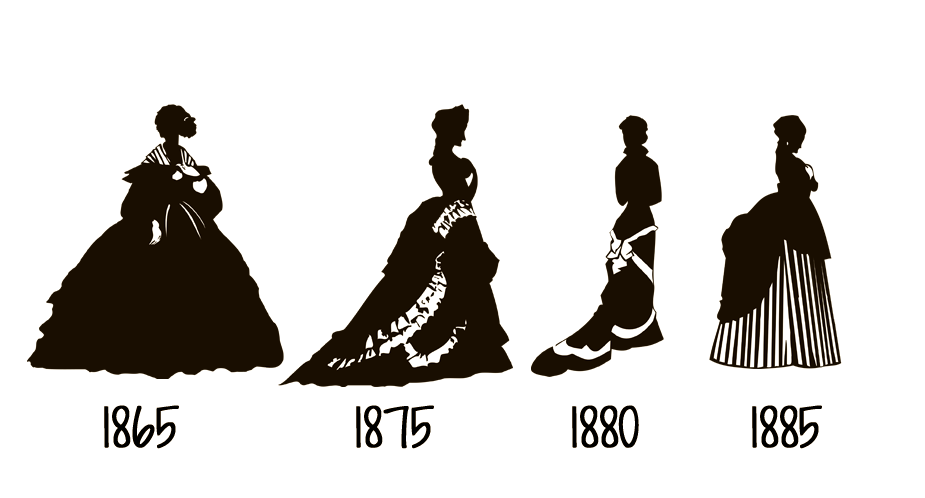.. had a “sheath” or “cuirasse” bodice line that was even longer than the early ones. It now had no waist seam and the bodice and skirt were cut in one – unlike any other garment previous which was always at least two pieces – bodice and skirt. (Photos: left, …
